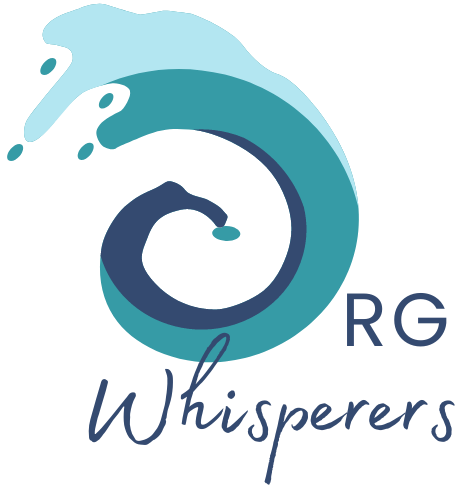 WYGAT WEED WHACKER
WYGAT WEED WHACKER
The story of the Wygat Weed Whacker goes back many years – to the time we bought our first home in the beautiful town of Allen, TX. One of the best parts of our home was a small back-yard, where my wife would spend time after each work-day, hanging out with her plants to let go of stress and recharge her energy. As seasons changed, one of her most fulfilling experiences was to plant bulbs or saplings and watch them grow. That used to be the routine until, our friend Mr. Wygat and his yard service got involved.
I remember the evening when my wife came back from work, brewed her cup of coffee and walked to the yard only to find that all her precious saplings had been destroyed by the Wygat Weed Wackers. Our yard service, like me, probably could not tell the difference between a weed and a pansy.
“WE NEED TO TALK…”
Understandably, my wife had a conversation with Mr. Wygat, thanked him for his services and informed him that we would not be needing them any more. Mr. Wygat made us a very attractive offer – he said he had just recruited some lower cost workers and offered to reduce our monthly invoice by 20%. My wife thanked him and declined. We found another person to take care of our yard – someone for whom plants were like precious children. Our new lawn service charged more than the old one but we were happy to pay because we were assured of value.
So we stopped paying for a service that would destroy what was most valuable for us and instead, started paying for service that would nurture and grow what was valuable for us.
V-P-C FRAMEWORK
This interaction always reminds me of a lesson I learned in from my Strategy Professor – Dr. Gordon Walker – at SMU Cox School of Business. The name of the course was “Innovation and Strategic Change” and Dr. Walker described an exercise that he routinely conducted in his classes. He would begin by asking these questions of his budget conscious undergraduate students…
- How much do you pay for your monthly cell-phone service?
- Raise your hands if you would continue to pay for your monthly cell-phone service if your service provider increased the price by…
- 5%
- 10%
- 15%
- 25%
- 50%
- 75%
- 100%
In every class that he asked this question, there were students who kept their hands raised up above the 50% mark illustrating an important point – when the service provider is offering something that is valuable and unique to their clients, the clients reward the service provider with loyalty and the flexibility to increase the prices without loss of market share.
Dr. Walker used this exercise to introduce the V-P-C Framework from his book Modern Competitive Strategy…
- V – Value received from the product / service. Set by the clients.
- P – Price set for the product / service. Set by product / service provider. Influenced by Clients.
- C – Cost incurred in creation of the product / service.
THE WALKER ICE BREAKER
Attending Dr. Walker’s lecture changed the way I look at Agile Software Delivery with Scrum. I adapted his exercise into an Agile Ice-Breaker that I have used with 300+ students…
- What is the most valuable product or service you have bought?
- Why?
- Given what you know about this product / service, if you were in the market to buy the same product / service again, would you still choose this provider if they raised the price….
- 5%
- 10%
- 15%
- 25%
- 50%
- 75%
- 100%
I have had students who have kept their hands raised until 100% or more. Some examples of the services they chose…
- Weight Loss
- Counseling Services
- Tablet for daughter’s education
- Laptop for wife’s career
V-W-R FRAMEWORK
I use this Ice-Breaker with my students to connect Dr. Walker’s V-P-C framework with the V-W-R Framework which will be familiar to most Agile Practitioners. Every time I attend a lecture by Ken Schwaber – the co-creator of Scrum, he emphasizes 3 key goals of Scrum…
- V – Increase Value
- W – Decrease Waste
- R – Manage risk exposure
V-P-C + V-W-R = MODERN “SCRUM”-PETITIVE STRATEGY
If we integrate the V-P-C framework with the V-W-R framework, we can design a Modern “Scrum”-Petitive Strategy for Sustainable Profitability…
- V – Increase value delivered to clients through frequent customer feedback via potentially shippable software every 30 days or less
- C & W – Ruthlessly eliminate waste in the process through Scrum Retrospectives & Definition of Done so the business lowers C-cost
- P – By delivering more value to the clients at a lower cost, provide more pricing flexibility to the business and increase revenue and profitability
- R – Do not expose the business to more than 30 days of risk in the pursuit of evidence based learning
Each time I use this exercise in my Agile Classes, I challenge students to apply every role, event, artifact and rule of Agile Software Delivery with Scrum to increase delivery of value at the lowest possible cost to provide pricing flexibility to the business and increase sustainable profit margin.
CALL TO ACTION
- How would you apply this framework to inspect and adapt your company’s Strategy and your Software Delivery Tactics?
- Is your software nurturing what is most valuable to your clients or destroying what is most valuable to your clients, like the Wygat Weed Whackers?
- Are you trying to retain and increase your market share by increasing value or decreasing cost at the expense of value?
- Can you validate your assumptions using empirical, evidence based techniques so you don’t expose your business to more risk than it can tolerate? How?




Comments